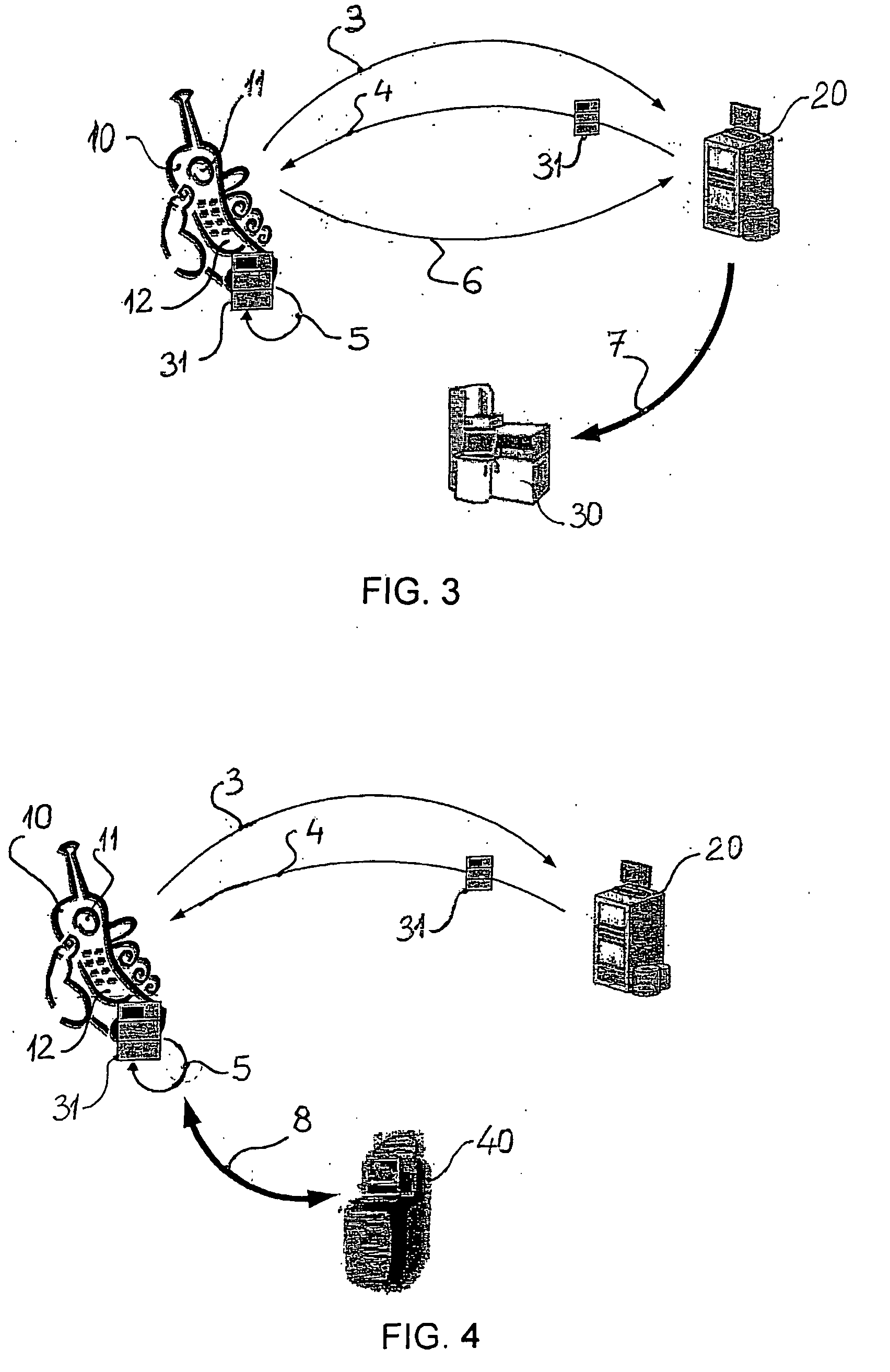Process and system to supply a multimedia application on a terminal using a programming agent
a terminal and multimedia technology, applied in the field of image processing, can solve the problems of inability to provide postcards in satisfactory conditions to the terminal user, inconvenient use, complex interfaces,
- Summary
- Abstract
- Description
- Claims
- Application Information
AI Technical Summary
Benefits of technology
Problems solved by technology
Method used
Image
Examples
first embodiment
[0033]FIG. 3 corresponds to the invention, which represents a diagram to produce, for example, a postcard by using an MMS-agent 31. The terminal 10 sends, by a link 3, a first message to the applications server 20. The terminal 10 is for example a cellphone, a camera phone, or a PDA. The link 3 is preferably a wireless link, like for example a signaling channel adapted to the GSM network (Global System for Mobile), or WAP or GPRS type links, to transmit e-mails, SMS or MMS. The first message comprises digital data. The digital data are for example a number with several digits of a known applications service, and optionally a short text targeting the sought application: for example “postcard”. The applications server 20 contacted by SMS, then automatically sends an MMS-agent 31, by a link 4, to the terminal 10. The link 4 is preferably a wireless link, like GPRS. The MMS-agent includes the programming agent 36 that corresponds to the requested application. In a preferred embodiment o...
second embodiment
[0040]However, in this second embodiment, the programming agent automatically establishes, according to a link 8, a connection to communicate digital data, from the terminal 10 to the kiosk 40, when the terminal 10 is located near the kiosk 40. The link 8 is preferably Bluetooth, IrDA, or WiFi type. The programming agent automatically establishes the communication between the terminal 10 and the kiosk 40, without any manual interaction by the terminal user. The programming agent also performs an automatic display of the user interface on the terminal 10. The interface is compatible with the kiosk 40, so that the user of the terminal 10, independently of the use of the kiosk by another user, can prepare an imaging work order from the terminal 10. An order that he / she could normally only prepare at the kiosk, after having loaded his / her data, for example of an image, from the terminal to the kiosk, and having waited, if necessary, for another user interacting with the kiosk to free th...
third embodiment
[0042]In this third embodiment, the programming agents specific to each of the terminals interact and interact with the platform for executing the imaging work 40 in order to determine the priorities of the work execution requests, on the basis of the multimedia message data prepared in common among the terminals. The requests are transmitted, from each of the terminals, to the platform for executing prints 40. The programming agent 36 produces an interface to automatically display, on each terminal, information associated with the execution of requests specific to each terminal; these requests are for example prints of the multimedia message prepared in common. Time information (e.g. hour, minute of the print) can be displayed automatically on each terminal having sent, for example a printing request of the multimedia message, to the kiosk 40. Like in the previous embodiments, the code data of the programming agent are automatically destroyed when the programming agent is deactivat...
PUM
 Login to View More
Login to View More Abstract
Description
Claims
Application Information
 Login to View More
Login to View More - R&D
- Intellectual Property
- Life Sciences
- Materials
- Tech Scout
- Unparalleled Data Quality
- Higher Quality Content
- 60% Fewer Hallucinations
Browse by: Latest US Patents, China's latest patents, Technical Efficacy Thesaurus, Application Domain, Technology Topic, Popular Technical Reports.
© 2025 PatSnap. All rights reserved.Legal|Privacy policy|Modern Slavery Act Transparency Statement|Sitemap|About US| Contact US: help@patsnap.com



